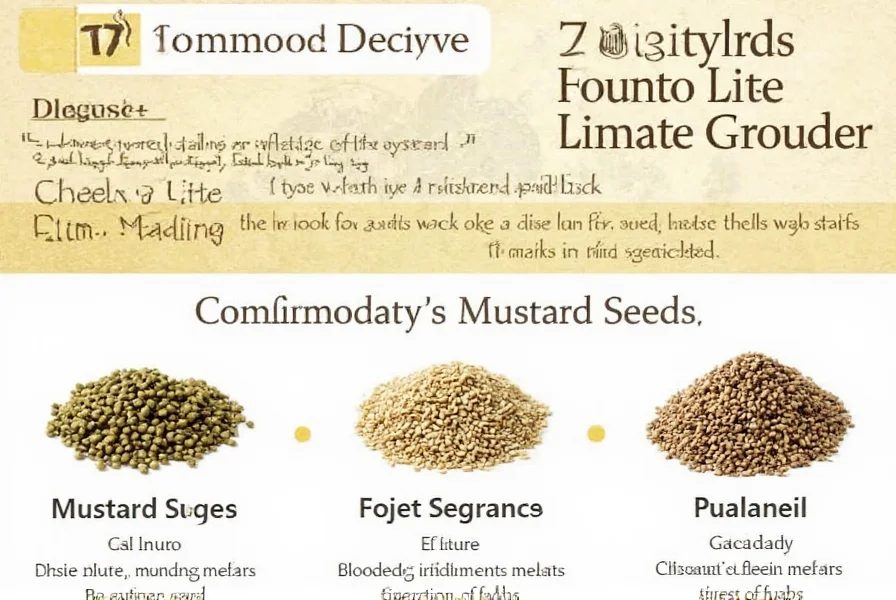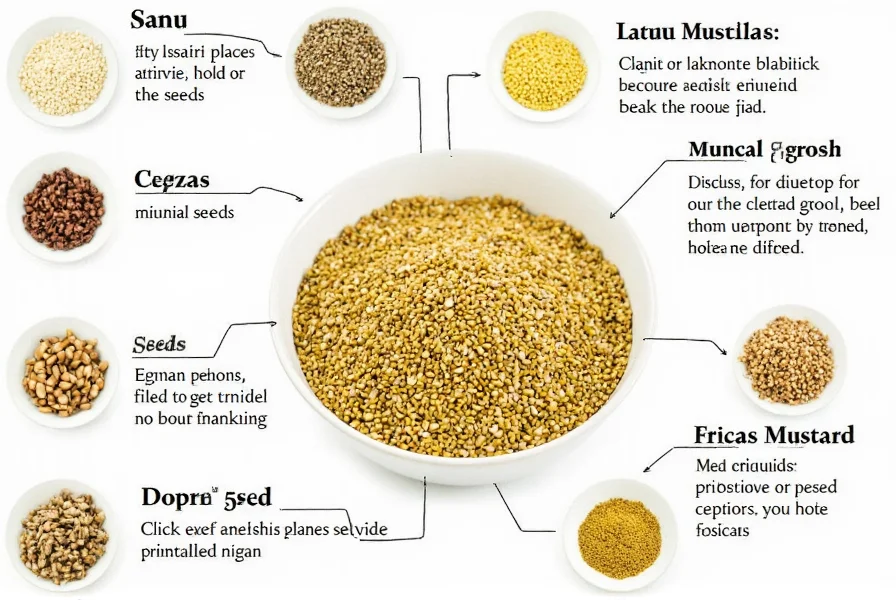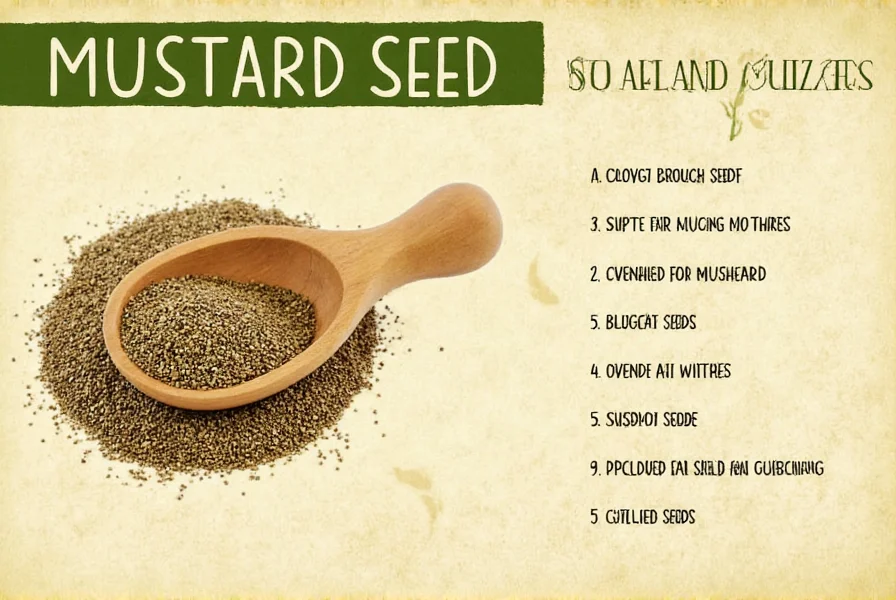When searching for mustard seeds pic references, understanding the visual characteristics of each variety helps in proper identification and culinary application. This guide provides accurate visual descriptions and practical information about these versatile seeds.
Visual Characteristics of Mustard Seed Varieties
Examining mustard seeds picture examples reveals clear distinctions between the three main types:
| Variety | Color | Size | Shape | Surface Texture |
|---|---|---|---|---|
| Yellow (White) | Pale yellow to light gold | Approximately 2mm | Rounded | Slightly wrinkled |
| Brown | Tan to medium brown | 1.5-1.8mm | Oval | Smooth |
| Black | Deep brown to black | 1-1.2mm | Small oval | Very smooth |

Practical Identification Guide
When examining mustard seeds visual identification samples, note these key characteristics:
Yellow mustard seeds (Sinapis alba) appear as the largest variety with a pale golden color. They have a mild flavor profile commonly used in American-style yellow mustard and pickling. In yellow mustard seeds picture references, they maintain a consistent light color even when dry.
Brown mustard seeds (Brassica juncea) display a medium brown hue and slightly smaller size than yellow varieties. They offer a more pungent flavor and are frequently used in Dijon mustard and Indian cuisine. When reviewing brown mustard seeds photo examples, notice their oval shape and smooth surface.
Black mustard seeds (Brassica nigra) represent the smallest and darkest variety, often appearing nearly black when mature. They deliver the most intense heat and are popular in South Indian and Ethiopian cooking. In black mustard seeds visual identification resources, their tiny size (about 1mm) distinguishes them from other varieties.
Culinary Applications and Storage
Understanding mustard seeds for cooking pictures helps visualize their transformation during preparation. When dry-roasted, mustard seeds pop and release aromatic compounds. When ground with liquid, enzymes activate to create the characteristic pungent flavor.
For optimal freshness, store mustard seeds in an airtight container away from light and heat. Properly stored, they maintain quality for 2-3 years. Exposure to moisture causes clumping and reduces shelf life significantly.

Nutritional Profile and Safety Considerations
Mustard seeds provide selenium, magnesium, and omega-3 fatty acids. One tablespoon (9g) contains approximately 50 calories, 3g fat, 3g carbohydrates, and 2g protein. They also contain glucosinolates, compounds studied for potential health benefits.
While generally safe, mustard seeds contain compounds that may interact with certain medications. People with thyroid conditions should consult healthcare providers about consumption levels, as mustard seeds contain goitrogens that may affect thyroid function when consumed in large quantities.
Common Questions About Mustard Seeds
What's the difference between yellow and brown mustard seeds?
Yellow mustard seeds (Sinapis alba) are larger (about 2mm), pale gold in color, and have a milder flavor. Brown mustard seeds (Brassica juncea) are smaller (1.5-1.8mm), medium brown, and significantly more pungent. Brown seeds contain higher levels of allyl isothiocyanate, the compound responsible for mustard's characteristic heat.
How can I tell if mustard seeds have gone bad?
Rancid mustard seeds develop a noticeably sour or bitter smell instead of their characteristic nutty aroma. Visually, they may appear darker or show signs of mold. Properly stored in an airtight container away from light and heat, mustard seeds maintain quality for 2-3 years. If they fail to pop when dry-roasted or lack their typical pungent flavor when ground, they've likely lost freshness.
Can I substitute one type of mustard seed for another in recipes?
Yes, but with flavor adjustments. Yellow seeds provide mild flavor suitable for American-style mustard and pickling. Brown seeds offer medium heat for Dijon and Indian dishes. Black seeds deliver the strongest flavor for South Indian cuisine. When substituting, use 1:1 ratio but adjust quantity based on desired heat level—black seeds are significantly more pungent than yellow. For milder results, reduce black seed quantity by 25-30% when replacing brown seeds.
Why do mustard seeds pop when heated in oil?
Mustard seeds pop due to moisture inside the seed rapidly turning to steam when exposed to high heat. As the internal pressure builds, the seed coat ruptures with a distinctive popping sound. This process, called tempering, releases essential oils and enhances flavor. Proper technique involves heating oil to medium temperature (not smoking hot) and adding seeds until they begin popping, which typically takes 30-60 seconds.
Are mustard seeds and mustard powder nutritionally equivalent?
Whole mustard seeds retain nutrients longer due to protective seed coat, while ground mustard powder offers immediate flavor compounds but loses potency faster. Nutritionally similar by weight, whole seeds provide slightly more fiber. Powdered mustard contains activated enzymes that create the pungent flavor, whereas whole seeds require moisture or grinding to activate these compounds. For maximum nutritional benefit, grind seeds fresh as needed rather than using pre-ground powder.











 浙公网安备
33010002000092号
浙公网安备
33010002000092号 浙B2-20120091-4
浙B2-20120091-4